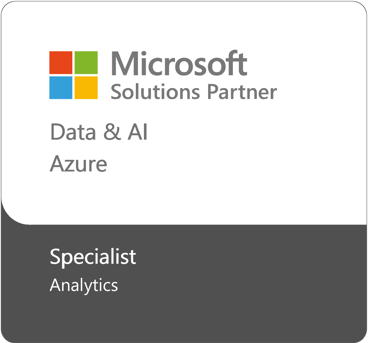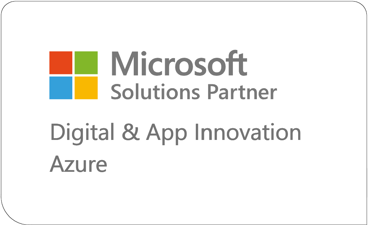Your Guide to Effective Data Storytelling in Marketing
One of the best ways to tell a story is through data storytelling. Through tools such as Microsoft’s Power BI you can deliver insights to help your organisation make better decisions.

Your data tells incredible stories, but only if you know how to make people listen. Marketers usually drown in information yet starve for insights as they look for the right tool to make sense of it all. They need something to transform raw numbers and figures into compelling narratives only they can make.
And that tool is none other than Data Storytelling.
Why Brains Crave Visual Stories
Humans are wired for visuals. You’ve likely seen the claim that people process visuals 60,000 times faster than text before, but that was an oversimplification. As newer studies emerge, it has been found that the human brain can process an entire image in as little as 13 milliseconds. While it's not the same criteria, it can be said that our eyes can process images fast.
Showing someone a chart instead of a spreadsheet makes things easier to understand and prettier because it’s the native language of our brains. Not words or numbers but images.
And the science to prove that is clear. Articles with visual content receive 94% higher readership than those without. People who use visual communication succeed 43% more often than those relying purely on text.
Your audience isn't being difficult when they glaze over at your data dumps. They're simply being human. So what exactly do you need to tell compelling stories then?
The Four Pillars of Effective Data Storytelling
1. Choose Data That Matters
Not every data should garner your attention. It’s the biggest mistake that many marketers make as they try to show everything they’ve gathered, instead of just focusing on what matters.
Start with impact, work backwards. Ask yourself: "What decision do I want my audience to make?" Then identify only the data points that support that decision. Everything else is noise.
Credibility matters more than volume, and remember that one trusted statistic beats ten questionable ones.
2. Select the Right Visualisation Type
Different stories require different visual approaches. A line graph excels at showing trends over time, whilst bar charts compare quantities effectively. Pie charts work for simple proportions, but become confusing with too many segments.
Remember to match your visual to your message. Use ascending lines to show growth. Use bar charts to deliver clarity in comparing performance. Pie charts work best in demonstrating market share and so on.
And always remember what your audience prefers to see. For example, business execs and C-suites would pick complex dashboards, whilst general audiences prefer a much simpler and cleaner presentation.
3. Master Colour Psychology
Colours serve a more functional purpose than just making everything look vibrant. Red would usually signal problems or declines, whilst green often suggests growth and success. These colour schemes help your audiences see through your story intuitively.
Then use contrast strategically. Highlight your key message with bold colours whilst keeping supporting information neutral. That way, you can guide where the attention should be.
And then, be consistent. Email campaigns, website graphics, and your very own presentation slides should look and speak the same visual language. Doing things the other way would only confuse your audience and weaken the message you built for them to understand.
4. Keep It Clean with Purpose
Throwing visuals one on top of another would repel audiences instead of inviting them. Every visual you include should have a purpose. If it doesn’t, especially for your story, then you’re better off without it.
White spaces are your friend. It would scream empty at first, but it actually serves as a breathing room to help your key messages stand out. Cramming designs and graphics everywhere just overwhelms the audience.
The Tools You’ll Need
To create compelling stories using data, you’ll need the right tools like Microsoft Power BI. It makes data storytelling possible and much easier. It connects to hundreds of data sources and ensures your visuals reflect accurate information. No more worrying about outdated spreadsheets undermining your credibility.
There are also AI-powered insights that automatically suggest the right visuals based on the data you gathered. Whenever you’re unsure, simply ask the platform and it’ll recommend the best approach and visuals to present.
Cross-device accessibility also ensures your stories reach the right audience at the right time. They can be on their way to work or on their desktop at home; the experience remains compelling every time they view your dashboards.
How to Build Your Data Storytelling Framework
With the right tools, the next step would be on how to start creating your compelling story.
-
Start with questions, not data. What keeps your audience awake at night? What decisions are they struggling to make? Your visualisations should answer these directly.
-
Simplify ruthlessly. The best reports often feature one bold, concise chart that tells a clear story. Resist the urge to show everything.
-
Test your message. Share your visualisation with someone outside the project. If they can’t grasp the key point within 30 seconds, simplify again.
-
Enable action. Good stories inform; great ones drive decisions.
The Bottom Line
Data storytelling is, in fact, about creating pretty pictures, but with the right data, it drives decisions and inspires action. The right words in a story can make us see the story in our head, and with the right visuals, you can guide every reader to the story you see instead.
Are you ready to create your story using the right set of data?
Let us help you inspire action on the right audience.



